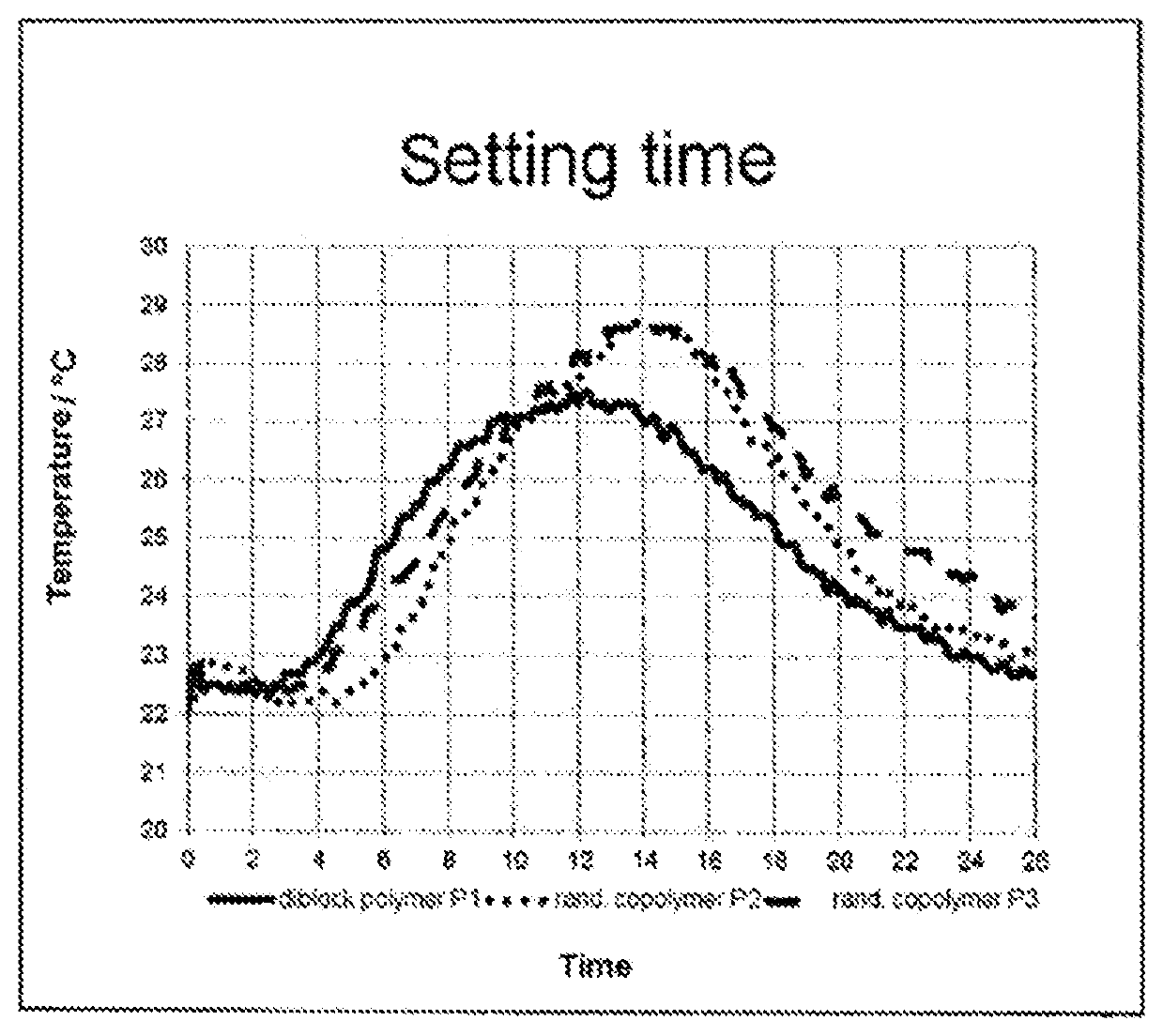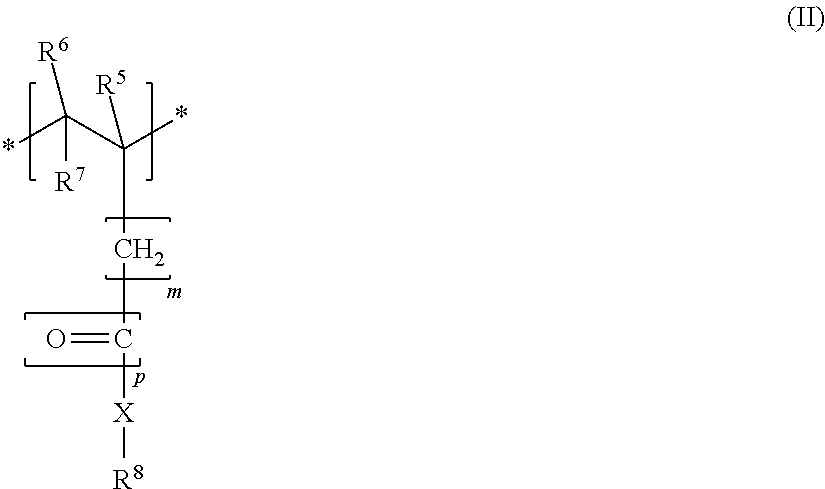Block copolymer
a technology of copolymer and block, applied in the field of block copolymer, can solve the problems of disadvantageous extension of setting time, undesirable affecting the setting behavior of binder compositions, complicated application, etc., and achieves the effect of effective plasticization, effective mineral binder composition processing, and low adverse
- Summary
- Abstract
- Description
- Claims
- Application Information
AI Technical Summary
Benefits of technology
Problems solved by technology
Method used
Image
Examples
working examples
1. Preparation Examples for Polymers
1.1 Diblock Copolymer P1 (n=20; M1 / M2=1; RAFT)
[0114]For the preparation of a diblock copolymer P1 by RAFT polymerization, a round-bottom flask equipped with a reflux condenser, agitator, thermometer, and inert gas inlet tube was charged with 57.4 g of 50% methoxy-polyethylene glycol1000 methacrylate (0.03 mol; average molecular weight: 1000 g / mol; ˜20 ethylene oxide units / molecule) and 18.4 g of deionized water. The reaction mixture was heated to 80° C. with vigorous stirring. A gentle stream of inert gas (N2) was passed through the solution during heating and for the whole of the rest of the reaction time.
[0115]Added to the mixture then were 273 mg of 4-cyano-4-(thiobenzoyl)pentanoic acid (0.85 mmol; RAFT agent). When the substance had fully dissolved, 42 mg of AIBN (0.26 mmol; initiator) were added. From this point on the conversion was ascertained regularly by HPLC.
[0116]As soon as the conversion, based on methoxy-polyethylene glycol methacryla...
PUM
| Property | Measurement | Unit |
|---|---|---|
| mol % | aaaaa | aaaaa |
| mol % | aaaaa | aaaaa |
| mol % | aaaaa | aaaaa |
Abstract
Description
Claims
Application Information
 Login to View More
Login to View More - R&D
- Intellectual Property
- Life Sciences
- Materials
- Tech Scout
- Unparalleled Data Quality
- Higher Quality Content
- 60% Fewer Hallucinations
Browse by: Latest US Patents, China's latest patents, Technical Efficacy Thesaurus, Application Domain, Technology Topic, Popular Technical Reports.
© 2025 PatSnap. All rights reserved.Legal|Privacy policy|Modern Slavery Act Transparency Statement|Sitemap|About US| Contact US: help@patsnap.com



